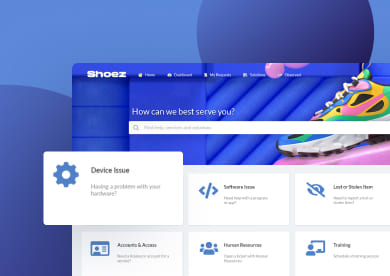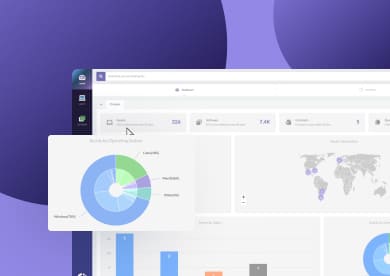Fixed assets are the backbone of every organization. From buildings and machinery to vehicles and equipment, they’re the long-term resources that keep operations running and drive business growth. That’s why understanding how to track, maintain, and account for them is essential.
In this guide, we’ll break down what fixed assets are, how they depreciate over time, and the best ways to manage them effectively — through proper Lifecycle Management, accurate tracking, and the right Fixed Asset Management software.
What are fixed assets?
Fixed assets are long-term tangible resources that a company uses to operate and produce goods or services. Although they are essential to the business, they are considered long-term because they cannot be quickly sold or converted into cash. Common examples include buildings, machinery, land, furniture, and vehicles.
While the term usually applies to physical items, certain companies also classify specific intangible assets (such as trademarks, patents, or goodwill) as fixed assets when they provide long-term economic benefits.
Types of fixed assets
What qualifies as a fixed asset can vary from one organization to another. A tractor, for instance, might be part of the inventory for a company that manufactures them, but it would be a fixed asset for a farming business that uses it for production.
Even with these differences, most organizations group their fixed assets into several common categories:
#1. Land
Land is one of the most stable fixed assets a company can own. It does not depreciate over time, but any improvements made to it (such as fences, lighting, or parking lots) are recorded separately and depreciated.
#2. Buildings
Buildings include offices, factories, warehouses, and retail locations. They are essential for operations and usually depreciate gradually throughout their useful life, reflecting wear and tear.
#3. Machinery and equipment
This category covers all the machines and tools used to produce goods or deliver services. Examples include industrial machinery, manufacturing equipment, or heavy construction tools.
#4. Vehicles
Vehicles such as company cars, delivery trucks, or aircraft are considered fixed assets when they support business operations and are expected to be used for several years.
#5. Furniture and fixtures
Desks, chairs, shelving units, lighting systems, and similar furnishings fall into this group. These assets help maintain daily operations and usually depreciate over time.
#6. Computer equipment
This includes computers, servers, and peripherals used across departments. Given their relatively short lifecycle compared to other assets, they tend to depreciate quickly.
#7. Software (in specific cases)
Software can be considered a fixed asset if it is purchased, owned, and used long-term to support operations — such as enterprise resource planning (ERP) or accounting systems.
However, subscription-based or cloud software (SaaS) is generally treated as an operational expense rather than a fixed asset.
Examples of fixed assets
To better understand how fixed assets appear in practice, here are some common examples across different industries:
- Manufacturing companies: machinery, production lines, forklifts, and storage facilities.
- Technology firms: servers, office furniture, and licensed software used for more than one year.
- Construction companies: heavy equipment such as cranes, excavators, and company trucks.
- Retail businesses: store buildings, display fixtures, and point-of-sale systems.
- Educational institutions: school buildings, laboratory equipment, and buses.
- Healthcare organizations: medical devices, diagnostic machines, and hospital infrastructure.
Fixed Asset Management lifecycle
The Fixed Asset Management lifecycle refers to the complete process of managing an organization’s fixed assets from acquisition to disposal. It ensures that assets are accurately tracked, properly maintained, and optimally used throughout their useful life.
A well-defined lifecycle helps organizations plan capital investments, monitor depreciation, and make informed decisions about repairs, replacements, or disposals. It also supports compliance with financial reporting standards and reduces the risk of asset loss or mismanagement.
Below are the main stages of the Fixed Asset Management lifecycle:
#1. Acquisition
This stage involves purchasing or otherwise acquiring the asset. It includes recording the initial cost, which covers not just the purchase price but also taxes, delivery, installation, and setup expenses. Having clear capitalization policies at this stage ensures consistency in how assets are recorded and valued.
#2. Deployment and utilization
Once acquired, the asset is installed or put into service. Tracking its location, assigned users, and operational role is essential to ensure proper usage and accountability. At this point, the organization begins to benefit from the asset’s productive value.
#3. Maintenance and monitoring
Throughout its life, the asset must be maintained to operate efficiently and avoid unexpected downtime. Regular inspections, preventive maintenance, and repairs extend the asset’s lifespan and improve return on investment. This stage also includes monitoring performance and updating records to reflect condition changes.
#4. Depreciation and valuation
As the asset ages or is used, its value decreases. This reduction (known as depreciation) is recorded periodically in the organization’s financial statements. Tracking depreciation accurately helps ensure compliance with accounting standards and provides insight into an asset’s true financial contribution.
#5. Disposal or replacement
When an asset reaches the end of its useful life, it’s either sold, recycled, or replaced. This stage involves removing the asset from the company’s records, assessing residual value, and ensuring proper data or environmental disposal procedures when applicable.

Fixed assets depreciation
One of the main characteristics of a fixed asset is that its value decreases over time. This gradual loss in value, known as fixed assets depreciation, occurs as assets wear out from use, age, or become obsolete due to technological advancements or process changes.
Depreciation allows companies to allocate the cost of an asset over its useful life instead of recording the full expense at once. This gives a more accurate view of the company’s financial performance and the real value of its assets.
How depreciation works
Each year, a portion of the asset’s original cost is treated as an expense on the income statement, while the remaining value is shown on the balance sheet. The accumulated depreciation reflects the total amount of value lost since the asset was purchased.
For example, a company that buys a $50,000 truck and expects to use it for five years might depreciate it by $10,000 per year. After three years, the truck’s book value would be $20,000 ($50,000 – $30,000 accumulated depreciation).
How to calculate depreciation
There are different methods for calculating depreciation, but most organizations use one of the following approaches:
- Straight-line depreciation: The asset loses the same amount of value each year over its useful life.
- Declining balance method: The asset loses more value in the first years of its life and less later on.
- Units of production method: Depreciation depends on how much the asset is used, which is common for machinery and vehicles.
The chosen method should reflect how the asset provides value to the company over time.
5 must-have features of Fixed Asset Management software
There are many useful features in Fixed Asset Management software, but a few are truly essential if you’re looking for a dedicated solution. Here are five must-have features every Fixed Asset Management system should include:
#1. Centralized asset registry
A unified database that stores all relevant information about each asset, including purchase details, cost, location, serial number, assigned user, and condition. This provides complete visibility and ensures data accuracy across departments.
#2. Asset tracking and monitoring
Knowing where your assets are, who is using them, and what condition they’re in is essential for effective management. Modern tools include QR codes, barcodes, or RFID tags to automate location updates and reduce manual work.
#3. Automated depreciation tracking
Since depreciation is one of the key characteristics of fixed assets, it deserves dedicated tracking. Specialized features automatically calculate and apply depreciation according to your chosen method (straight-line, declining balance, or units of production) to maintain accurate financial reporting and compliance.
#4. Lifecycle and Maintenance Management
This feature covers every stage of an asset’s life (from acquisition to disposal) while helping teams schedule preventive maintenance, track warranties, and record service history. Proper lifecycle management maximizes value and reduces downtime.
#5. Reporting and analytics
Customizable dashboards and reports provide insights into asset performance, utilization, depreciation, and maintenance costs. These analytics help organizations plan budgets, forecast replacements, and make better investment decisions.
Managing fixed assets with InvGate Asset Management

If your organization needs to manage fixed assets (especially those that are primarily IT) InvGate Asset Management is the way to go. Designed to handle both IT and non-IT assets, it provides a complete view of your infrastructure, helping you track, maintain, and optimize every resource throughout its lifecycle.
Here are some of the main capabilities InvGate Asset Management brings to the table:
- Centralized asset database - Create and maintain a unified database of all your assets (or a fixed asset inventory) with multiple population methods. You can add fixed assets manually or automatically, covering your entire asset portfolio with minimal effort.
- Comprehensive asset tracking - Track assets across your organization, automatically for IT assets through the InvGate Agent installed on computers and servers, and manually or via custom inputs for non-IT assets.
- Fixed asset tracking - For physical assets, InvGate offers robust IT asset tracking plus QR code printing for easy tagging and identification. Additional integrations are under development to enhance non-IT asset tracking even further.
- Automatic depreciation calculation - InvGate Asset Management automatically calculates depreciation using the straight-line method. You can define rules by asset type, manufacturer, or useful life to maintain accurate financial data and plan replacements with ease.
- Reports and customizable dashboards - Generate automatic reports and visual dashboards to monitor asset value, depreciation, and performance. These insights support better decision-making and long-term planning.
Want to see it in action? Start your 30-day free trial of InvGate Asset Management and discover how easy it is to track, control, and optimize all your fixed assets in one place.
Best practices for managing fixed assets
Once you understand what fixed assets are and how they work, putting the right management practices in place is essential to protect your investment and maintain accurate financial records. Here are a few best practices to keep your Fixed Asset Management strategy on track:
1. Keep an up-to-date fixed asset inventory
Maintain a detailed and accurate fixed asset inventory that includes each asset’s location, condition, acquisition cost, and owner. This helps you prevent asset loss, streamline audits, and ensure compliance with accounting standards.
2. Use reliable fixed asset tracking software
Invest in Fixed Asset Management software or fixed asset tracking software to automate data collection, updates, and depreciation calculations. Tools like InvGate Asset Management simplify tracking, reporting, and decision-making while reducing manual effort.
3. Tag your assets for easier identification
Implement a fixed asset tagging system using QR codes or barcodes. Fixed asset tagging allows teams to quickly locate and verify assets during audits, maintenance, or transfers, improving visibility and accountability.
4. Monitor fixed assets depreciation regularly
Track fixed assets depreciation over time to keep your financial data accurate. Automated depreciation management ensures that your records reflect the real value of each asset and supports smarter replacement or upgrade decisions.
5. Review and optimize your policies
Regularly evaluate your Fixed Asset Management policies to align them with operational and financial goals. Define clear capitalization thresholds, update asset lifecycles when needed, and review disposal or replacement processes to maximize value.















